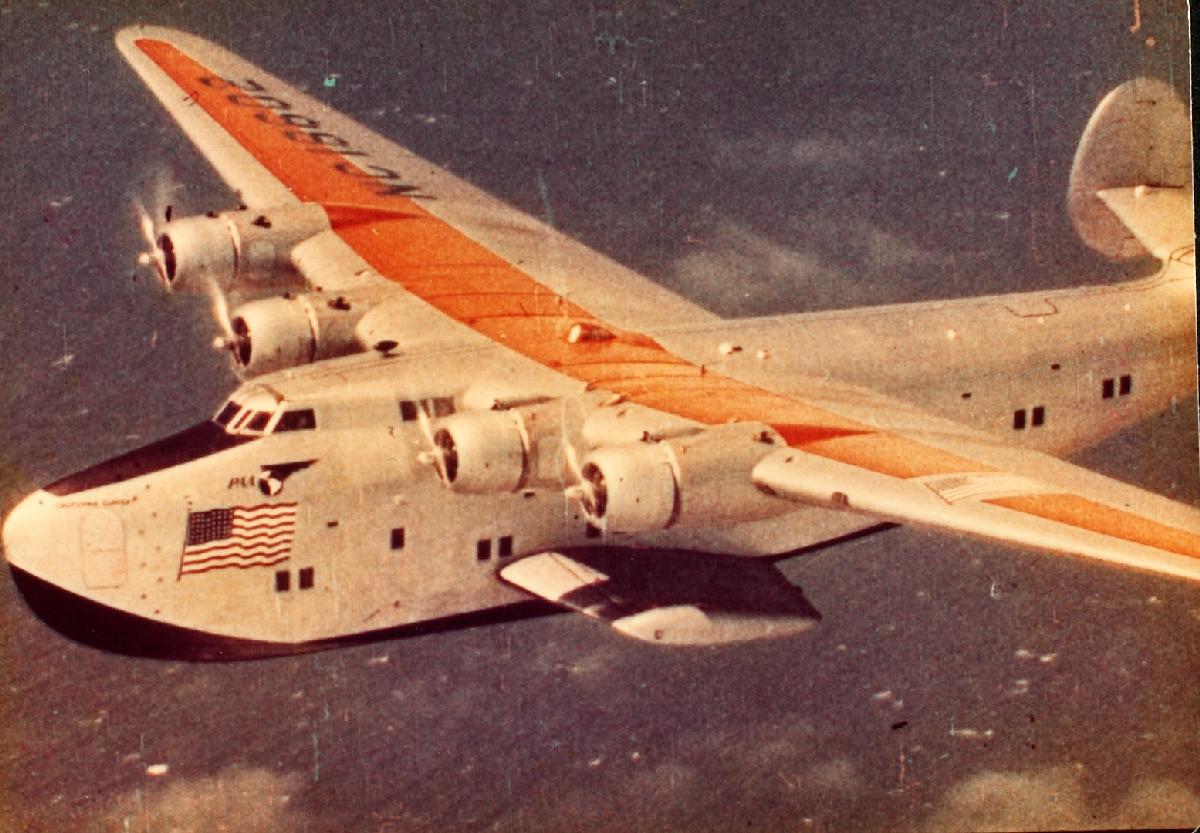196-The Long Way Home
Futility Closet
Greg Ross
4.8 • 748 Ratings
🗓️ 16 April 2018
⏱️ 30 minutes
🧾️ Download transcript
Summary

When Japan attacked Pearl Harbor, the crew of an American seaplane were caught off guard near New Zealand. Unable to return across the Pacific, they were forced to fly home "the long way" -- all the way around the world. In this week's episode of the Futility Closet podcast we'll follow the adventures of the Pacific Clipper on its 30,000-mile journey through a world engulfed in war.
We'll also delve into the drug industry and puzzle over a curious case of skin lesions.
Intro:
In the 18th century Italian artist Giovanni Piranesi began to turn out etchings of fantastic prisons.
Spanish philologist Valentín García Yebra contends that this six-word Portuguese poem can't be translated effectively into another language.
Sources for our feature on the Pacific Clipper:
Ed Dover, The Long Way Home, 2010.
Archie Satterfield, The Day the War Began, 1992.
C.V. Glines, "The China Clipper, Pan American Airways and Popular Culture," Aviation History 18:1 (September 2007), 69-70.
C.V. Glines, "Clippers Circle the Globe," Aviation History 17:4 (March 2007), 34-43.
John A. Marshall, "The Long Way Home," Air & Space Smithsonian 10:2 (June/July 1995), 18.
Wolfgang Saxon, "Robert Ford, Clipper Pilot of 40's Who Circled Globe, Dies at 88," New York Times, Oct. 19, 1994.
"World Travelers Pearl Harbor Turns a Routine Pan Am Clipper Flight Into a 31,500-Mile Odyssey," Chicago Tribune, Dec. 3, 2000.
Byron Darnton, "Pacific Clipper, Racing War, Circles Globe, Lands Here," New York Times, Jan. 7, 1942.
"Pacific Clipper at Noumea," New York Times, Nov. 11, 1941.
"Pan Am's Pacific Clippers," Pacific Aviation Museum, Sept. 14, 2011.
Robert van der Linden, "December 7, 1941 and the First Around-the-World Commercial Flight," Smithsonian National Air and Space Museum, Dec. 8, 2011.
John A. Marshall, "Celebrating the 75th Anniversary: The 'Round The World Saga of the 'Pacific Clipper,'" Pan Am Historical Foundation (accessed April 1, 2018).
Listener mail:
Nicola Nosengo, "Can You Teach Old Drugs New Tricks?", Nature, June 14, 2016.
James Rudd, "From Viagra to Valium, the Drugs That Were Discovered by Accident," Guardian, July 10, 2017.
Thomas A. Ban, "The Role of Serendipity in Drug Discovery," Dialogues in Clinical Neuroscience 8:3 (September 2006), 335–344.
David W. Thomas et al., "Clinical Development Success Rates 2006-2015," BIO/Biomedtracker/Amplion, 2016.
Charlie Sorrel, "The Bicycle Is Still a Scientific Mystery: Here's Why," Fast Company, Aug. 1, 2016.
Michael Brooks, "We Still Don't Really Know How Bicycles Work," New Statesman, Aug. 6, 2013.
Michael Brooks, "How Does a Bicycle Stay Upright?", New Scientist, Sept. 2, 2015.
This week's lateral thinking puzzle was contributed by listener Arabo Avanes. Here are two corroborating links (warning -- these spoil the puzzle).
You can listen using the player above, download this episode directly, or subscribe on iTunes or Google Play Music or via the RSS feed at http://feedpress.me/futilitycloset.
Please consider becoming a patron of Futility Closet -- on our Patreon page you can pledge any amount per episode, and we've set up some rewards to help thank you for your support. You can also make a one-time donation on the Support Us page of the Futility Closet website.
Many thanks to Doug Ross for the music in this episode.
If you have any questions or comments you can reach us at [email protected]. Thanks for listening!
Transcript
Click on a timestamp to play from that location
| 0:00.0 | Welcome to the Futility Closet Podcast, forgotten stories from the pages of history. |
| 0:13.9 | Visit us online to sample more than 10,000 quirky curiosities from an imaginary prison to an untranslatable poem. |
| 0:20.9 | This is episode 196. |
| 0:22.6 | I'm Greg Ross. |
| 0:23.6 | And I'm Sharon Ross. |
| 0:25.3 | When Japan attacked Pearl Harbor, the crew of an American sea plane were caught off guard |
| 0:29.7 | near New Zealand. |
| 0:31.1 | Unable to return across the Pacific, they were forced to fly home the long way, all the |
| 0:36.5 | way around the world. |
| 0:38.2 | In today's show, we'll follow the adventures of the Pacific Clipper |
| 0:41.5 | on its 30,000-mile journey through a world engulfed in war. |
| 0:46.1 | We'll also delve into the drug industry and puzzle over a curious case of skin lesions. |
| 0:55.6 | In the late 1930s, when flying across oceans was still a thrilling new experience, |
| 1:00.6 | Pan American World Airways created a fleet of seaplanes to carry the rich and famous |
| 1:04.7 | to exotic destinations in the Pacific. |
| 1:07.1 | These planes were called Clippers, and they were beautiful, luxurious, and huge. |
| 1:10.5 | A Model 314 Boeing Clipper was 106 feet long with a 152-foot wingspan and weighed 82,500 pounds, |
| 1:17.9 | and it could carry 74 passengers, cargo, and mail over hops of 3,500 miles landing in the water at each destination. |
| 1:25.3 | On the morning of December 7, 1941, Pan Am was operating four of |
| 1:28.8 | these planes in the Pacific. One of them, the Pacific Clipper, was in the air between New Caledonia and |
| 1:33.8 | New Zealand when the radio operator picked up an AM radio broadcast announcing that Pearl Harbor |
| 1:38.1 | had been attacked. Immediately after that, the ground station in New Caledonia sent them an urgent |
... |
Please login to see the full transcript.
Disclaimer: The podcast and artwork embedded on this page are from Greg Ross, and are the property of its owner and not affiliated with or endorsed by Tapesearch.
Generated transcripts are the property of Greg Ross and are distributed freely under the Fair Use doctrine. Transcripts generated by Tapesearch are not guaranteed to be accurate.
Copyright © Tapesearch 2025.

